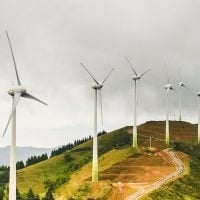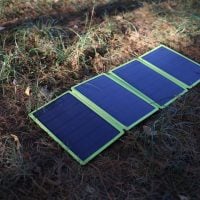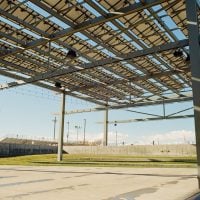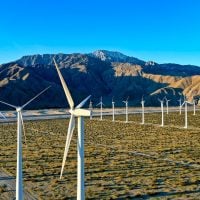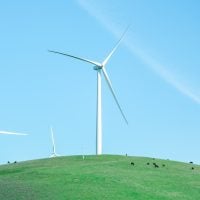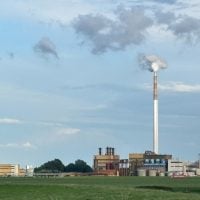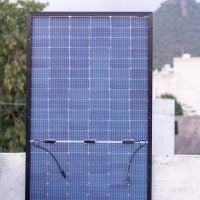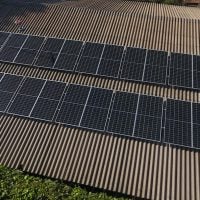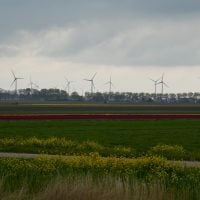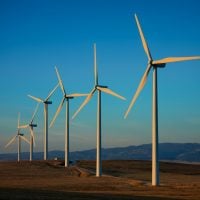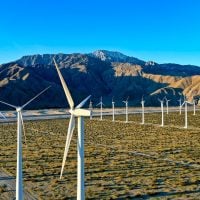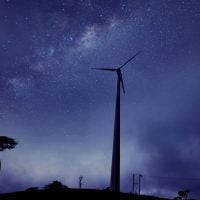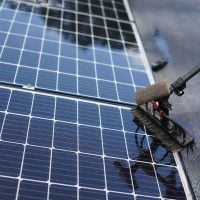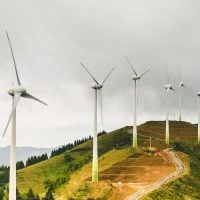In recent years, the global conversation surrounding climate change has intensified, leading to a growing recognition of the importance of clean energy solutions. For many regions, particularly the Pacific Island nations, the transition to renewable energy sources is not just a matter of environmental sustainability; it is a critical component of economic resilience and social stability. Clean energy donors play a pivotal role in this transition, providing the necessary funding, technology, and expertise to help these nations harness renewable resources such as solar, wind, and hydroelectric power.
This article aims to explore the significance of clean energy for Pacific Island nations, outline the criteria for selecting top donors, and highlight some of the most impactful contributors in this field. The Pacific Islands are uniquely vulnerable to the effects of climate change, facing rising sea levels, extreme weather events, and other environmental challenges. As a result, the need for sustainable energy solutions has never been more urgent.
Clean energy donors not only provide financial support but also foster partnerships that empower local communities to take charge of their energy futures. By investing in renewable energy projects, these donors help mitigate the impacts of climate change while promoting economic development and social equity. Understanding who these donors are and how they contribute can provide valuable insights for NGO professionals working in this critical area. Are You Working on Solar Innovation or Clean Energy Access? Join us to receive updates.
The Importance of Clean Energy for Pacific Island Nations
The Pacific Island nations are characterized by their geographical isolation and limited natural resources, making them heavily reliant on imported fossil fuels for energy. This dependency not only poses economic challenges but also exacerbates their vulnerability to global price fluctuations and supply disruptions. Transitioning to clean energy sources is essential for enhancing energy security and reducing greenhouse gas emissions.
By investing in renewable energy infrastructure, these nations can decrease their reliance on imported fuels and create a more sustainable energy landscape. Moreover, clean energy initiatives can stimulate local economies by creating jobs and fostering innovation. For instance, solar energy projects can provide employment opportunities in installation, maintenance, and management, while also reducing electricity costs for households and businesses.
The shift towards renewable energy can also enhance resilience against climate-related disasters, as decentralized energy systems can be more robust in the face of extreme weather events. In essence, clean energy is not just an environmental imperative; it is a pathway to sustainable development for Pacific Island nations.
Criteria for Selecting Top Clean Energy Donors
Identifying the top clean energy donors requires a comprehensive evaluation of various factors that contribute to their effectiveness and impact. First and foremost, the financial commitment of a donor is crucial; this includes both the amount of funding provided and the sustainability of that funding over time. Donors that offer multi-year grants or long-term partnerships are often more effective in supporting ongoing projects.
In addition to financial contributions, the technical expertise and resources that donors bring to the table are equally important. This includes access to advanced technologies, training programs, and capacity-building initiatives that empower local communities to manage their clean energy projects effectively. Furthermore, the alignment of a donor’s mission with the specific needs and priorities of Pacific Island nations is essential for ensuring that interventions are relevant and impactful.
Finally, successful collaboration with local governments, NGOs, and community organizations can enhance the effectiveness of donor contributions by fostering a sense of ownership and accountability among stakeholders.
The Top 20 Clean Energy Donors for Pacific Island Nations
The landscape of clean energy donors is diverse, encompassing government agencies, international organizations, philanthropic foundations, and private sector entities. Each donor brings unique strengths and resources to the table, contributing to a collective effort to advance renewable energy solutions in Pacific Island nations. The following sections will delve into some of the most influential donors in this space, highlighting their contributions and impact on clean energy initiatives.
Donor #1: The Green Climate Fund (GCF)
The Green Climate Fund (GCF) stands out as a leading global fund dedicated to supporting developing countries in their efforts to combat climate change. Established under the United Nations Framework Convention on Climate Change (UNFCCC), GCF has made significant contributions to clean energy projects in Pacific Island nations. With a focus on promoting low-emission and climate-resilient development pathways, GCF provides financial assistance for a range of initiatives, including renewable energy generation, energy efficiency improvements, and capacity-building programs.
One notable project funded by GCF is the Solar Power Project in Fiji, which aims to increase access to affordable and reliable electricity for rural communities. By investing in solar photovoltaic systems and battery storage solutions, GCF is helping to reduce reliance on diesel generators while promoting sustainable development. The impact of GCF’s funding extends beyond financial support; it also fosters collaboration among local stakeholders and enhances technical expertise within communities.
Donor #2: The Asian Development Bank (ADB)
The Asian Development Bank (ADB) has been instrumental in financing clean energy projects across the Asia-Pacific region, including Pacific Island nations. ADB’s commitment to sustainable development is reflected in its investments in renewable energy infrastructure, capacity building, and policy support. By providing loans, grants, and technical assistance, ADB empowers countries to transition towards cleaner energy sources while addressing their unique challenges.
One exemplary initiative supported by ADB is the Renewable Energy Development Project in Samoa. This project focuses on harnessing Samoa’s abundant solar resources to generate electricity for both urban and rural areas. ADB’s involvement not only provides financial backing but also facilitates knowledge sharing and best practices among stakeholders.
Through its comprehensive approach, ADB is helping Pacific Island nations build resilient energy systems that can withstand the impacts of climate change.
Donor #3: The United Nations Development Programme (UNDP)
The United Nations Development Programme (UNDP) plays a vital role in promoting sustainable development through its various initiatives worldwide. In the context of clean energy for Pacific Island nations, UNDP focuses on integrating renewable energy solutions into national development plans while addressing social equity and environmental sustainability. By collaborating with governments and local communities, UNDP ensures that clean energy projects are aligned with broader development goals.
A notable example of UNDP’s work is its support for the Renewable Energy for Rural Livelihoods project in Vanuatu. This initiative aims to provide access to clean energy for remote communities through solar microgrids and other renewable technologies. By empowering local residents with training and resources, UNDP fosters community ownership of these projects while enhancing resilience against climate-related challenges.
Donor #4: The World Bank
The World Bank has long been a key player in financing development projects across various sectors, including clean energy. With a focus on poverty reduction and sustainable development, the World Bank provides funding and technical assistance to help Pacific Island nations transition towards renewable energy sources. Its comprehensive approach encompasses policy advice, capacity building, and investment financing.
One significant project supported by the World Bank is the Pacific Islands Renewable Energy Investment Program (PIREIP), which aims to increase access to renewable energy across several island nations. By facilitating investments in solar, wind, and hydroelectric power projects, PIREIP helps reduce reliance on fossil fuels while promoting economic growth. The World Bank’s involvement not only provides financial resources but also fosters collaboration among stakeholders to ensure successful project implementation.
Donor #5: The Global Environment Facility (GEF)
The Global Environment Facility (GEF) is an international partnership that supports projects aimed at addressing global environmental challenges. In the context of clean energy for Pacific Island nations, GEF focuses on promoting sustainable land management practices and enhancing access to renewable energy sources. By providing grants and technical assistance, GEF empowers countries to implement innovative solutions that address both environmental sustainability and socio-economic development.
A noteworthy initiative funded by GEF is the Renewable Energy Access Project in Tonga. This project aims to increase access to clean electricity for underserved communities through solar power systems and battery storage solutions. GEF’s support not only enhances energy access but also contributes to local economic development by creating jobs in installation and maintenance.
Donor #6: The European Union (EU)
The European Union (EU) has been actively involved in supporting clean energy initiatives in Pacific Island nations through various funding programs and partnerships. With a strong commitment to combating climate change and promoting sustainable development, the EU provides financial resources for renewable energy projects while fostering collaboration among stakeholders. One prominent example of EU support is the Pacific Regional Energy Programme (PREP), which aims to enhance regional cooperation on renewable energy development across Pacific Island nations.
By facilitating knowledge sharing and best practices among countries, PREP helps build capacity for implementing clean energy solutions while addressing common challenges faced by island nations.
The Impact of Clean Energy Donors on Pacific Island Nations
The contributions of clean energy donors are instrumental in shaping a sustainable future for Pacific Island nations. Through financial support, technical expertise, and collaborative partnerships, these donors empower local communities to transition towards renewable energy sources while addressing pressing environmental challenges. The impact of their efforts extends beyond mere financial contributions; they foster resilience against climate change while promoting economic growth and social equity.
As NGO professionals continue to navigate the complex landscape of clean energy initiatives in Pacific Island nations, understanding the role of these donors becomes increasingly important. By leveraging their resources and expertise effectively, organizations can enhance their impact on local communities while contributing to a more sustainable future for all. The journey towards clean energy is not just about technology; it is about empowering people and fostering partnerships that drive meaningful change in vulnerable regions around the world.
In the context of supporting sustainable development and clean energy initiatives, the article “Top 20 Clean Energy Donors for Pacific Island Nations” highlights significant contributions to the region’s energy transformation. A related article that may be of interest is the NOFO: Manufacturing USA Institute – AI for Resilient Manufacturing (US). This article discusses the integration of artificial intelligence in manufacturing processes to enhance resilience and sustainability, which aligns with the goals of clean energy donors in promoting innovative solutions for environmental challenges. Both articles emphasize the importance of technological advancements and strategic funding in fostering sustainable development across different regions.


